These Texas wildflowers 'transcend time' at Lady Bird Johnson Center
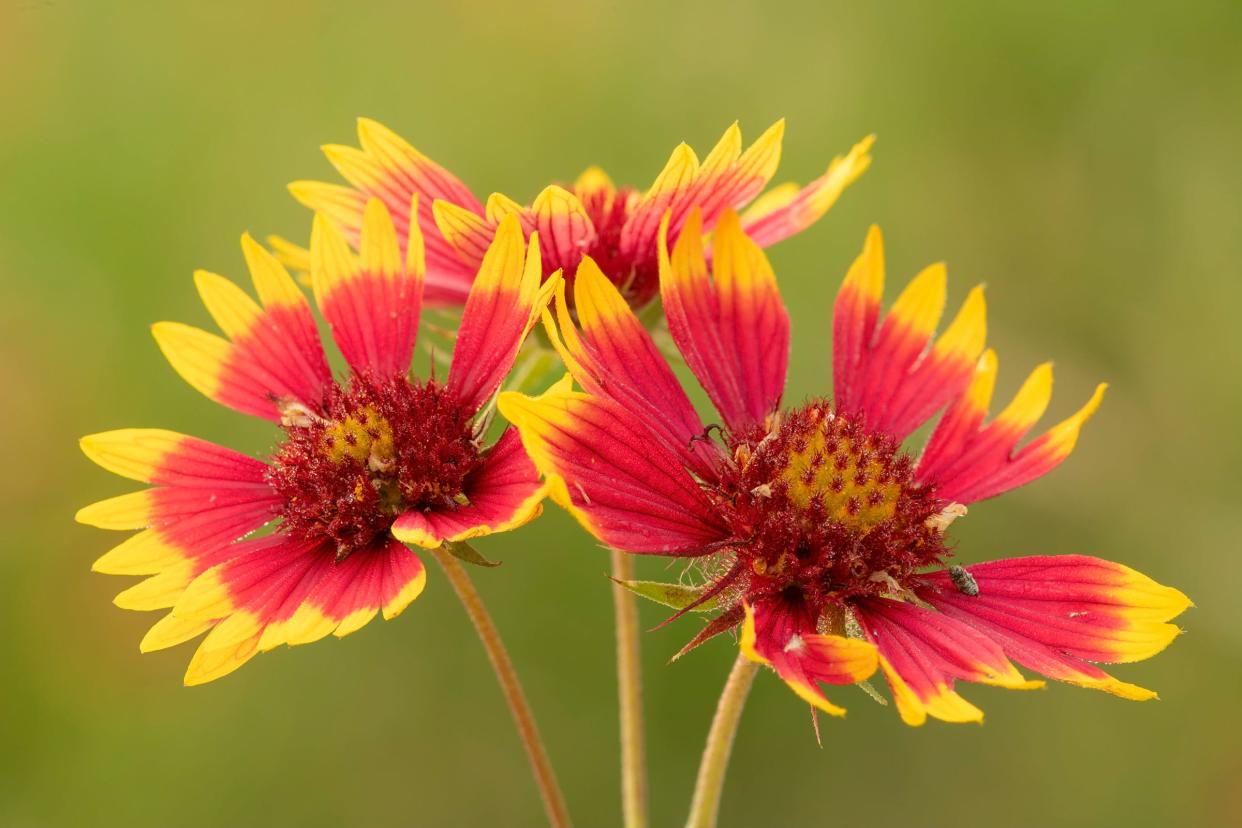
- Oops!Something went wrong.Please try again later.
Against the gray-green mesh of salt grass, the tiny red and yellow blossom popped out like a firecracker.
The single firewheel — Gaillardia pulchella, also known as girasol roja or Indian blanket — was ready for spring by mid-February. This, despite some cold, windy nights ahead at Surfside Beach, Texas.
Over the next days, some large yellow and some small white wildflowers, which I could not name, emerged from the Texas dunes during our annual winter beach reading retreat. On our drive home, the first fields of bluebonnets spread out over the gentle hillsides alongside Texas 71 near La Grange.
By the time I wrote this column in early March, there was no holding back the wildflowers across Central Texas, adding some intense color to dense urban districts around downtown Austin.
Few Americans are as attached to wildflowers as are Texans, perhaps because the late Lady Bird Johnson, the patron saint of the state's outdoors, promoted their natural beauty, especially along our highways and byways.
While the Texas bluebonnet — Lupinus texensis — gets all the ink, other wildflowers retain their fans. I asked the gracious souls who work at the Lady Bird Johnson Wildflower Center to tell me about their best-loved blossoms, with special emphasis on those associated with childhood memories.
Unlike the showy masses of bluebonnets, their locations are harder to predict, or to spot en masse while tooling around the state. If you want to see firewheels, however, I bet you will find some around the Texas State University campus in San Marcos.
Keep an eye out for them. Then let me know some of your favorites and, just as importantly, why you love them and where you can usually find them. Send a message to me at mbarnes@gannett.com, and I might include your favorites in a future Think, Texas column.
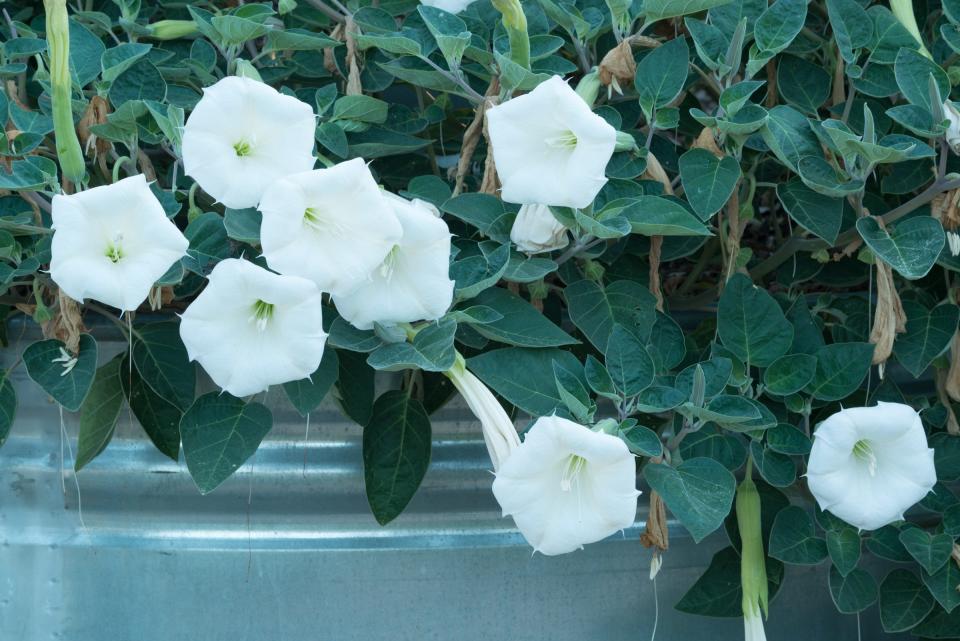
'Brightening the night landscape like little full moons'
"When asked what her favorite flower was, it's been told that Mrs. Johnson used to say that picking a favorite wildflower would be like picking a favorite child," says Lee Clippard, executive director of the Wildflower Center. "Even still, there's a lot of lore around Texas bluebells being her fave."
Clippard feels the same way. It's hard to choose.
"But I'd say that one of my favorites is datura or jimsonweed (Datura wrightii)," he says. "I love that its large white trumpet blooms open at night, brightening the night landscape like little full moons. They have a sweet scent and are pollinated by giant moths called hawkmoths — also my favorite insect — and the hawkmoths also use datura as a host for their caterpillars. You might have seen big 'tobacco hornworms' on datura if you have any in your garden.
"Datura also has an allure because it is a narcotic; it was used in religious ceremonies by indigenous peoples, but please don't try this yourself because it is lethally poisonous," Clippard says. "I highly recommend reading 'The Serpent and the Rainbow' by Wade Davis. It's an anthropological journey documenting his efforts to understand Haitian Vodou and zombies.
"Spoiler alert: Datura plays a feature role."
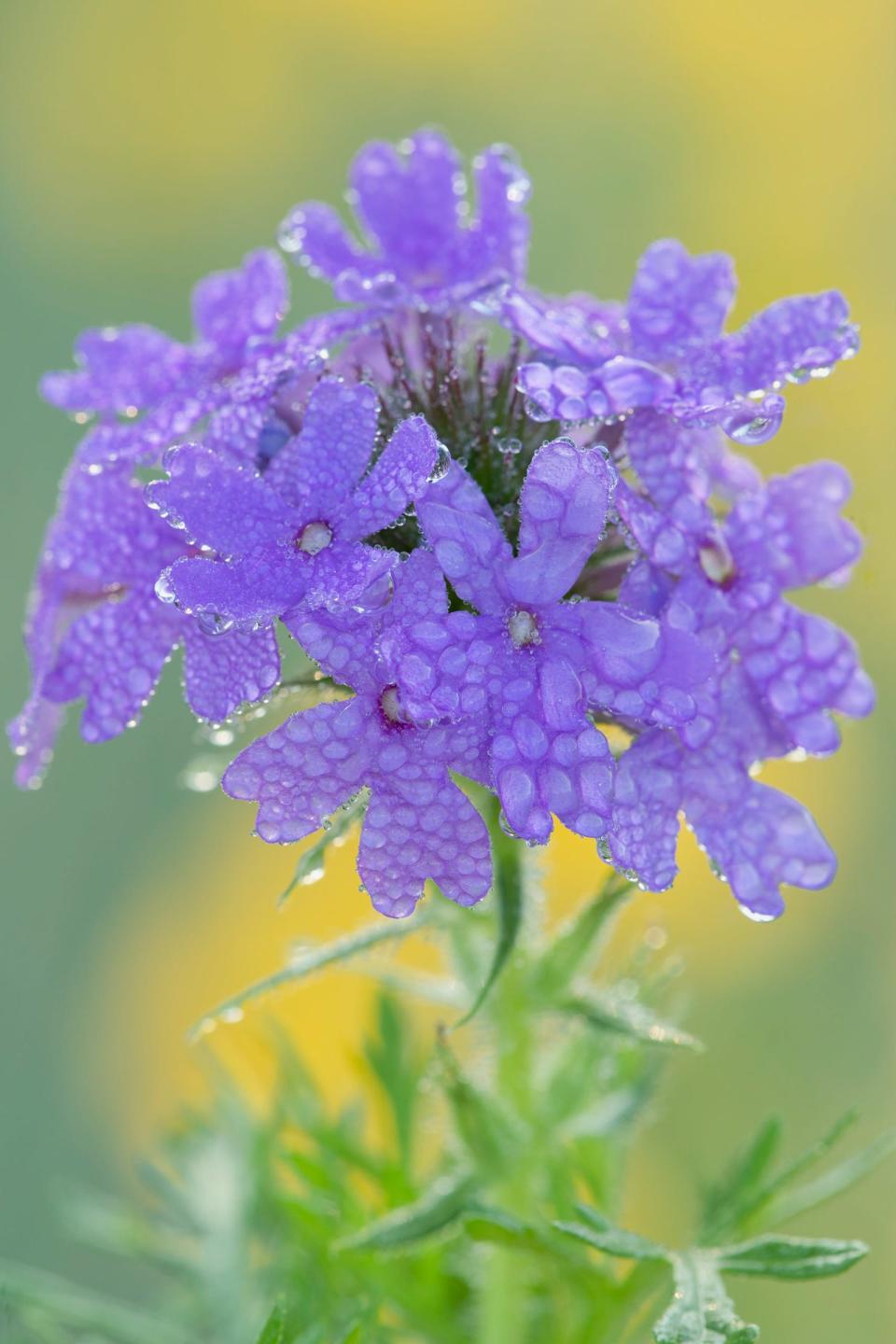
'Bloom and thrive, just like I strive to do in my own life'
Demekia Biscoe, director of education, is fond of the white honeysuckle (Lonicera albiflora).
"Growing up in east Texas, honeysuckle grew everywhere," Biscoe says. "It was a tasty treat of early summer. The smell reminds me of childhood summers, running through the pines, and jumping across creeks filled with tadpoles."
Joe Marcus, coordinator for the center's Native Plants Of North America Program, picks the cardinal flower (Lobelia cardinalis).
"During summer, its tall spikes of bright red flowers add brilliant accents to wetlands across more than half of North America," Marcus says. "It was a common feature of gravel bars on a beloved river that ran through the farm of my childhood."
Dyhanara Rios, a multimedia communications specialist, also is reminded of childhood, but by the purple prairie verbena (Glandularia bipinnatifida).
"Purple is my favorite color, but it is uncommon in nature, so it was a joy to see little patches of these wildflowers pop up here and there in my hometown, San Antonio," she says. "No matter the conditions, the clusters of little violet stars continue to bloom and thrive, just like I strive to do in my own life."
'It is a little world of wonder all its own on the vine'
Leslie Zachary, the center's director of development, retains a fondness for the passionflower (Passiflora foetida).
"It is also called Corona de Cristo and the fetid flower," Zachary says. "Apparently, the crushed leaves have a terrible scent, although I have never tried it. The flower is incredibly complex and detailed to my uneducated eye, and the contrast between the purple petals and green stamen catches my attention every time I see it.
"Then comes the bright red fruit, in its little cage of green tendrils. I had never seen anything like the flower or the fruit before I moved to Texas, and while it doesn’t come in waves of color along the highway, it is a little world of wonder all its own on the vine."
Stephanie Del Toro, assistant director of development, prefers the Rio Grande globe amaranth (Gomphrena haageana).
"This native flower inspired me to learn more about plant anatomy and propagation," Del Toro says. "It features colorful papery bracts and almost imperceptible tiny flowers. Not only does it thrive in direct sunlight, but it also retains its bright color even when dried."
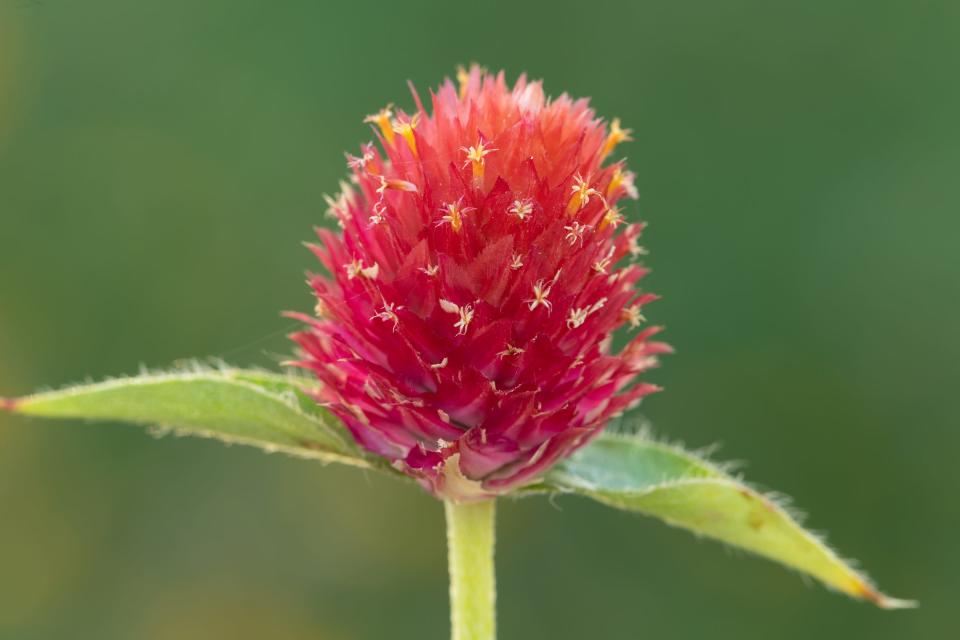
'They transcend time, as much of nature does'
Like me, administrative assistant Maggie Delamater has a crush on the firewheel (Gaillardia pulchella).
"I know it may seem a little cliché, as it was the center’s wildflower of the year for 2022," Delamater say, "and being a Texas State alum — it’s the university’s school flower — but having been born and raised in Central Texas, it’s a wildflower that reminds me of home more than any other.
"The bloom window aligns in my memory with school letting out for summer vacation and the air of exciting possibility that that always seemed to promise. It’s a flower I associate with beginnings and in a way, resilience; it powers through the spring and into the hotter, drier months long after most wildflowers have gone to seed.
"I don’t know that I really appreciated Gaillardia until I returned home from a three-month trip abroad and saw the field outside of my childhood home colored solid red from the sheer number of them. It was then that I knew, as much as I can be, I am of this place; it is my home.
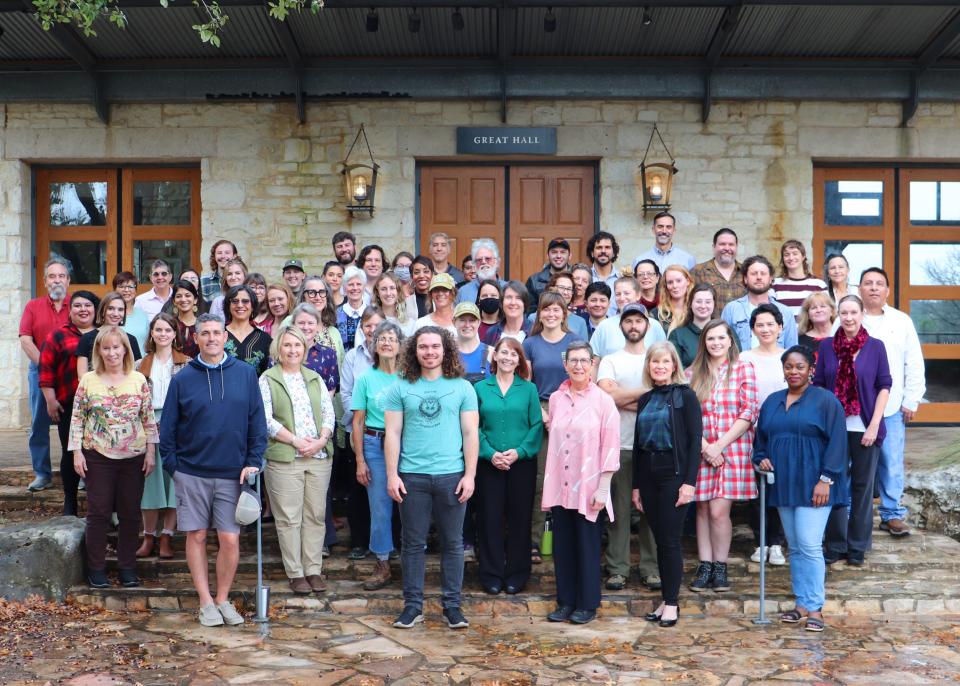
"Much of my life is as distracted as anyone else’s, but seeing a field of wildflowers that have long existed in the background of my memory can snap me into the present like nothing else. Gaillardias ground me; they transcend time, as much of nature does. They existed before us, exist alongside us, and will exist after we are gone. It’s a peaceful moment in a fraught world."
Michael Barnes writes about the people, places, culture and history of Austin and Texas. He can be reached at mbarnes@gannett.com. Subscribe to the free weekly digital newsletter, Think, Texas, at statesman.com/newsletters, or at the newsletters page of your USA Today Network newspaper.
This article originally appeared on Austin American-Statesman: Texas wildflowers blooming now at Lady Bird Johnson Wildflower Center

